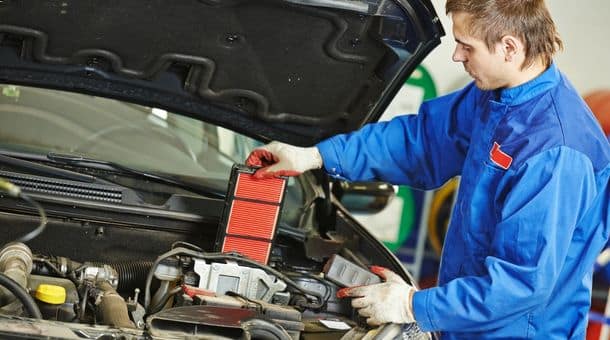The cold weather is upon us, and there are many things you must be aware of.
As with the changes you can make to your clothing to keep warm, your car may require a cold-weather revamp to work correctly.
If you’re looking for savings, then winterizing your car is vital. The money you spend today on the best fluids, new tires and brakes, wipers and other small improvements can help you save money later on.
And if these correct winter car maintenance tips can help you avoid mishaps or accidents, every dollar and effort you make today will be worth it.
TOP 10 Tips HOW to prepare your car for Winter
1: Check your Car brakes
Your brakes should be in top condition, especially in winter. If they sound squeaky, create other sounds or strange sensations, have the problem checked. If you’re planning to take your vehicle out after a few days of being left unattended during the winter, you can set it off gently to see if the discs, callipers, or handbrake are frozen.
2: Make sure the battery is charged
As temperatures begin to fall, it’s vital to ensure your car is ready for colder weather. One method to ensure this is to test your battery. Colder weather can cause freezing of the battery fluid and make it difficult to start the vehicle.
To avoid this, you must ensure the battery’s terminals are clear and clean of corrosion. Also, check the battery to determine whether it can hold a charge. If it’s not, it could require replacement.
It’s also an excellent idea to have an extra battery in your trunk in the event there’s an emergency. With these easy steps, you’ll be able to make sure that your car is ready for any winter storm that comes it’s way.
3: Check Your Car’s Belts and Hoses
The belts and hoses under your car’s hood are usually examined when your vehicle is scheduled to be tuned up (usually every 30 miles).
However, even if you’re not scheduled for an annual tune-up, it’s never hurt to ask a mechanic to check the condition of everything within your motor.
The cold temperatures can cause damage to the belts and pipes, and when something breaks or snaps while you’re on the road and you need to get it fixed, a tow truck may be the only option to fix it.
4: Check Your Car Tire Tread
Tires with worn-out treads are among the most common reasons for winter accidents. Tires that have worn out or are old and worn make stopping more difficult and decrease stability, which is particularly the case in winter conditions. So the first step is to examine the depth of the tread.
Measure tread depth with the help of a penny. Then, insert a penny into the tread with Lincoln’s head in the downward direction. If your tread appears higher than the height of the head, it’s time to replace your tires.
Furthermore, check tire pressure and keep a gauge of pressure handy in your vehicle. Pressure drops on tires when the temperature gets colder.
For example, a temperature drop of 10 degrees can lead to a one-psi decrease in weight. Inflated tires wear out more quickly and could result in sliding across slippery roads.
5: Check Your Car’s Oil
To ensure that your vehicle can run smoothly in winter, You’ll need to test your oil to ensure the level isn’t low and is of the correct consistency. Always ensure that you’ve checked the owner’s manual of your vehicle to confirm that you’re making use of the recommended type of oil to maximize your vehicle’s performance.
6: Have the emergency kits in your car
For any driver who has experience conditions in winter can turn unpredictable and hazardous. Snow, ice, and frigid temperatures can be treacherous, even a brief journey. Therefore, it’s important to be prepared by making sure you have a vehicle emergency kit for winter.
The most important items are a shovel, an ice scraper cable, jumper cables tow strap, a first aid kit, and blankets. It’s also recommended to carry non-perishable food items and water if you are stuck. With a preparedness plan, you’ll be able to ensure that you’ll get to your destination safely.
7: Install winter wipers
They come with rubber to prevent snow from getting in the edges. Make sure you remove the blades when spring arrives. Since winter wipers weigh more than regular ones, leaving them on at all times adds stress to the wiper’s motor.
7: Guard your paint job
The winter weather can cause temperatures to fall and drop. You should think about the location you park your car. Complete exposure to cold and freezing elements isn’t a good idea, and constantly brushing snow and scraping ice off of your vehicle can cause scratches. A shelter of some kind will protect your car’s shiny exterior.
If you own garage space, we recommend getting rid of it to allow enough space for your vehicle. However, investing in a top-quality car cover could be worthwhile if you do not have a garage.
A sturdy garage cover or shelter can protect your vehicle while in a garage; however, what happens when you’re driving? The slush of snow and rock salt can cause damage to the car’s bodywork.
To avoid this, routine washing of your vehicle in the winter months and even a protective wax during the winter months can help maintain the appearance of your paint.
9: Headlights and Foglamps
In addition to the temperature, another factor that is worthy of winter car care advice is fog. While fog isn’t an everyday phenomenon throughout India, it is prevalent, particularly in Northern regions.
The most significant impact it can have on your driving in fog is visibility. Therefore, you should ensure that your lighting systems are in full health. Foglamps are more crucial in cutting in the fog than the headlamps in your car.
Today, almost all vehicles have front fog lamps, and back fog lights are becoming more common. If your vehicle is old and is not equipped with fog lamps, it would make sense to purchase an aftermarket lamp if you live in areas prone to fog.
10: Replace Your Car Air Filter
If you are in an area that has frigid winter temperatures, the likelihood is that you’re about to spend the next couple of months travelling with the windows closed. With the heat and the defroster, your inside fan is in operation for the majority of winter time, and it’s not only about comfort.
A well-flowing defroster can clear your windshield quicker, making safe driving conditions. The issue is that some vehicles come with the cabin’s blocked air filters, and eventually, the blockage will adversely affect airflow throughout the ventilation system.
Dirty filters are less efficient in purifying the air, and the effect of a clean filter is twofold. First, it increases the security of the vehicle’s passengers and all other motorists in the roadway.
Most of the time, your cabin’s air filter will be straightforward to replace, and it is a replacement that can be found for a reasonable price.
For some relatively new vehicles, the air filters may be purchased from the dealer, and in that case, they’ll be costlier.
However, the interior filters of the most popular models can be found on eBay at lower prices. The latest filters are typically more efficient than the OEM model, which means they are more efficient; however, there are many OEM filters to choose from on eBay too.








